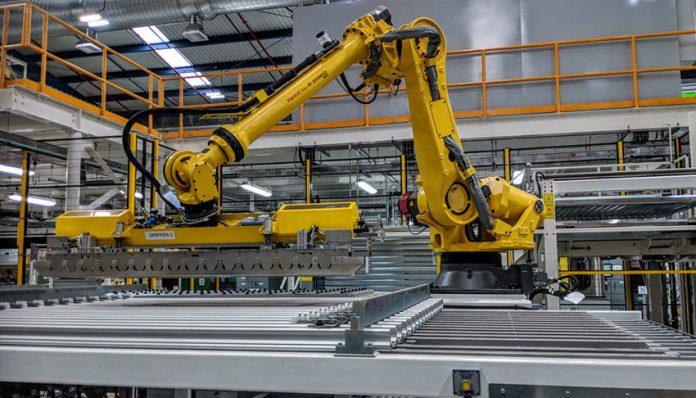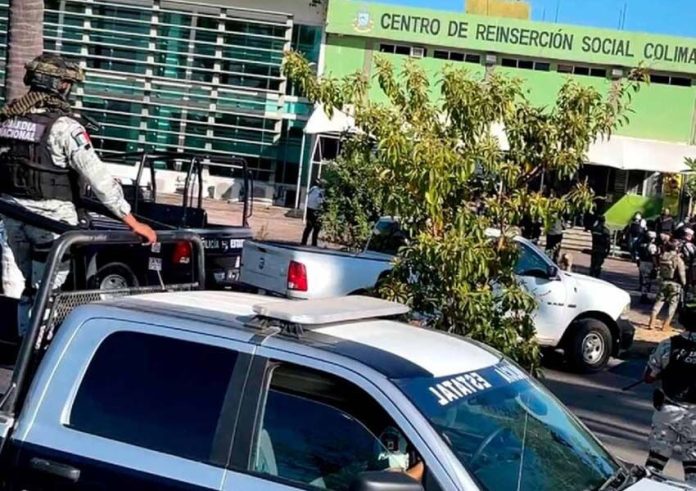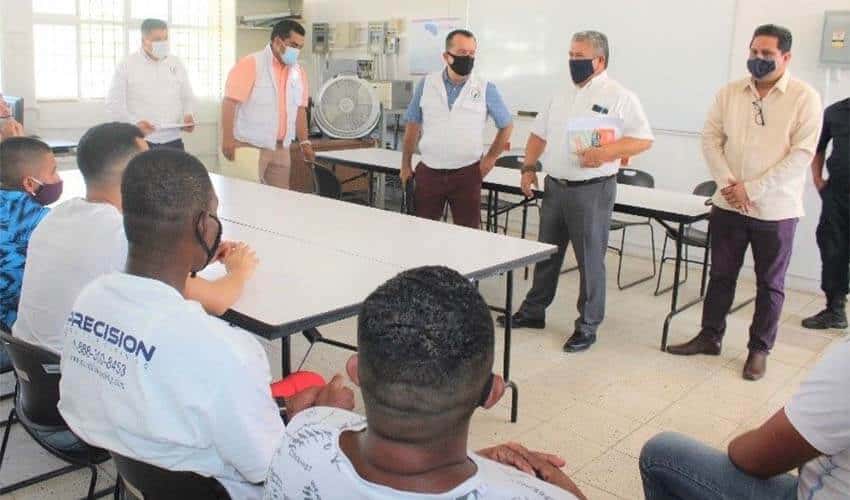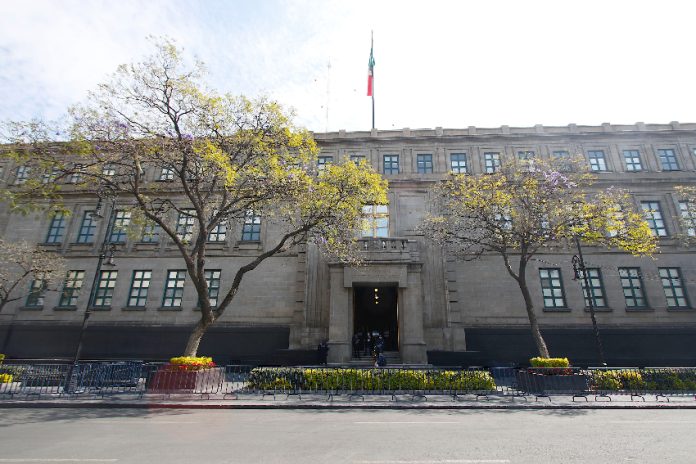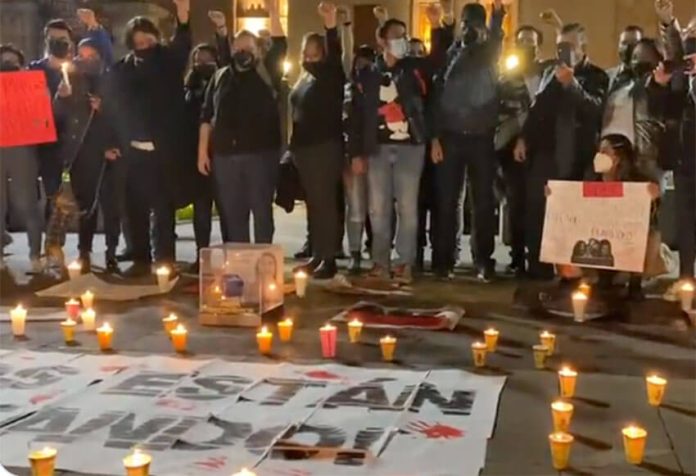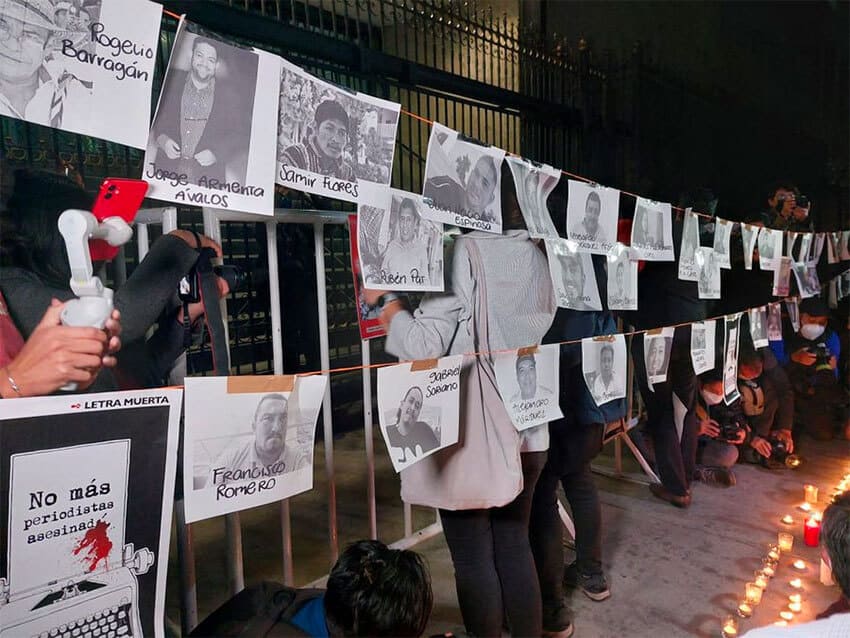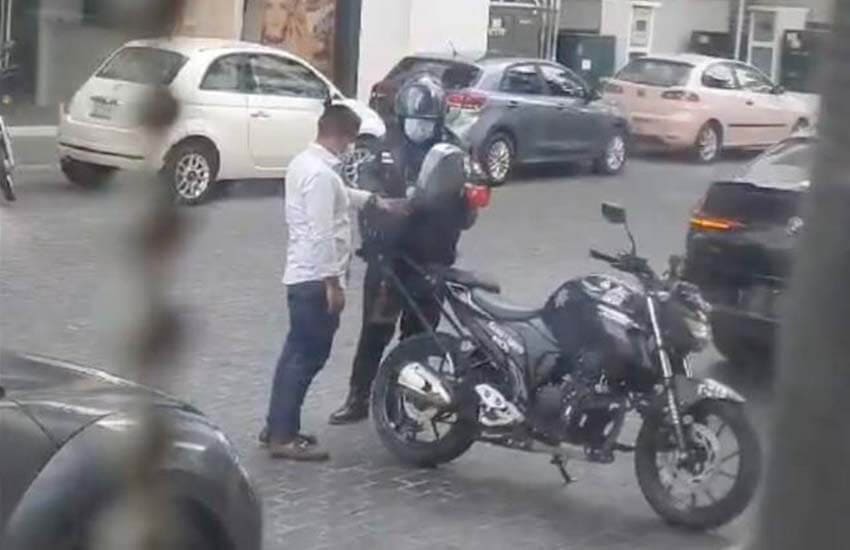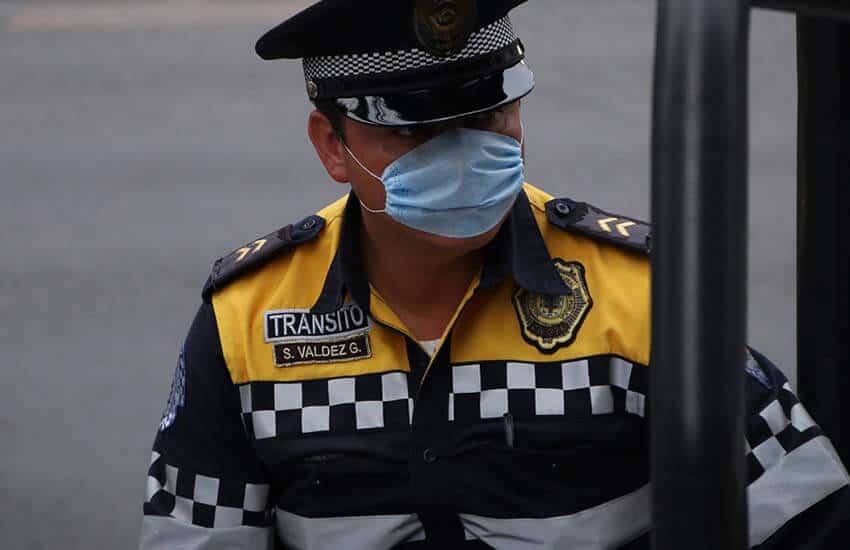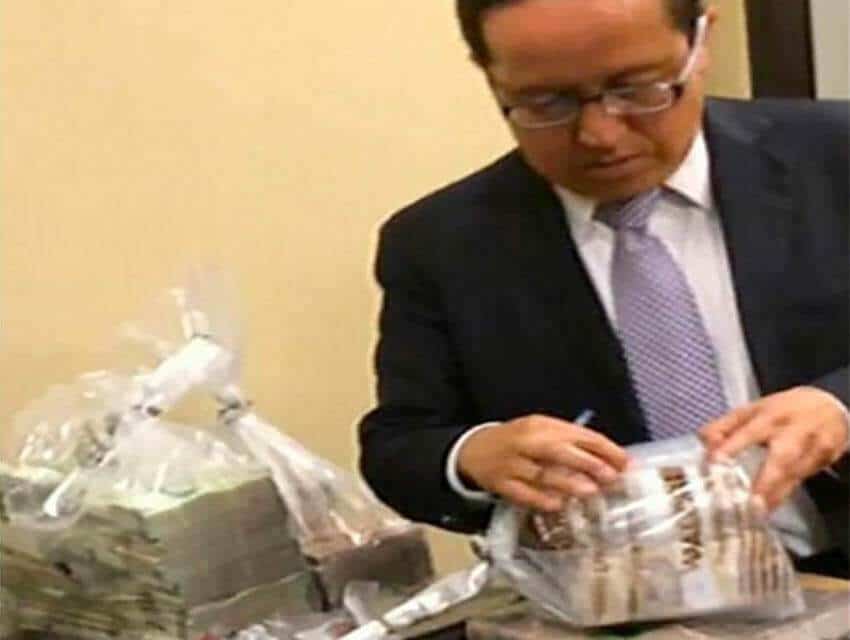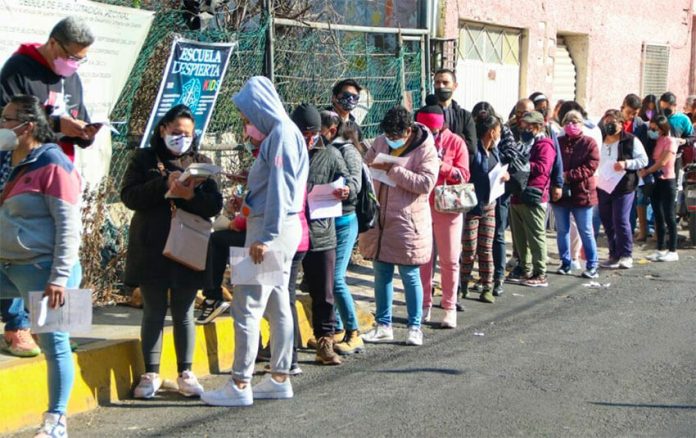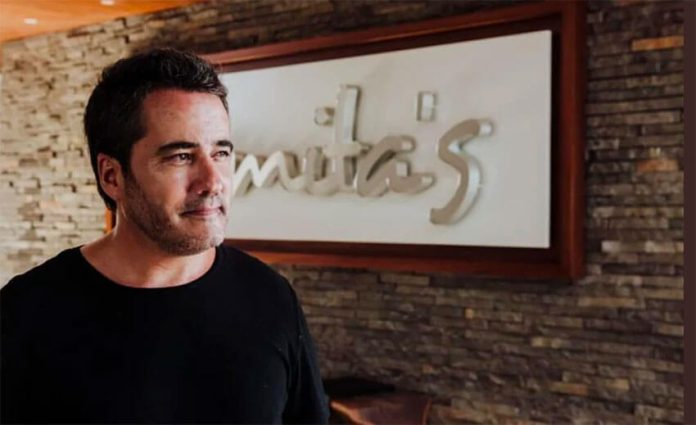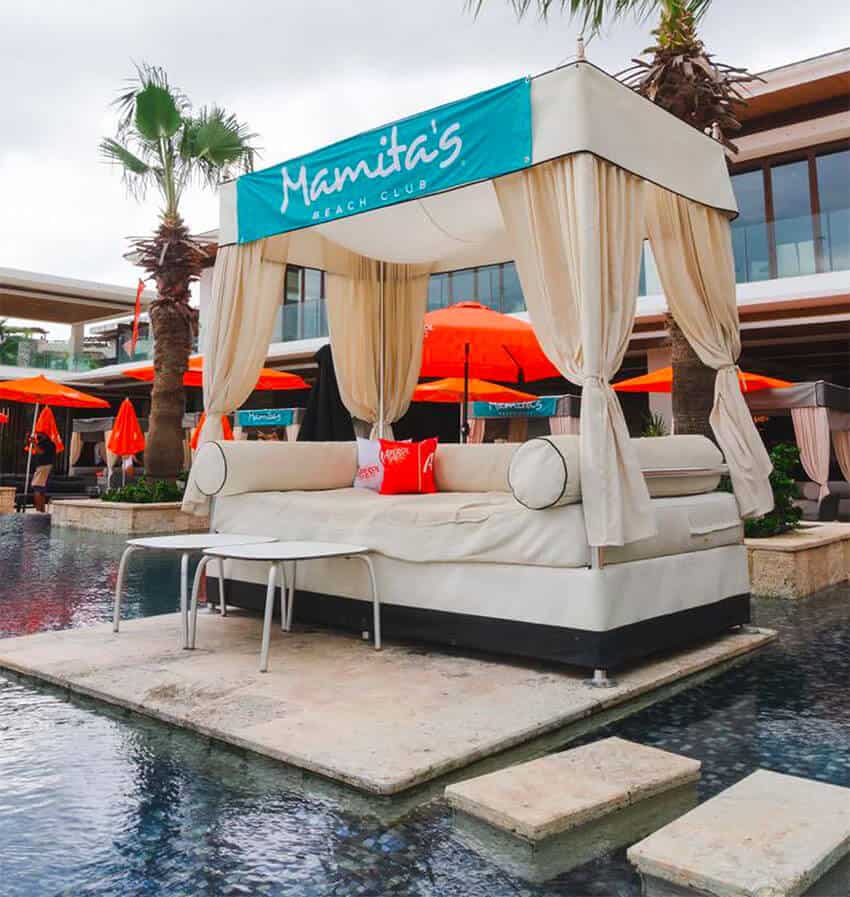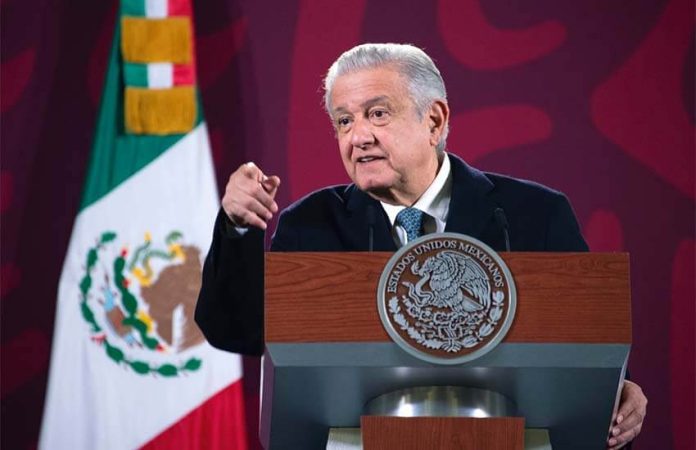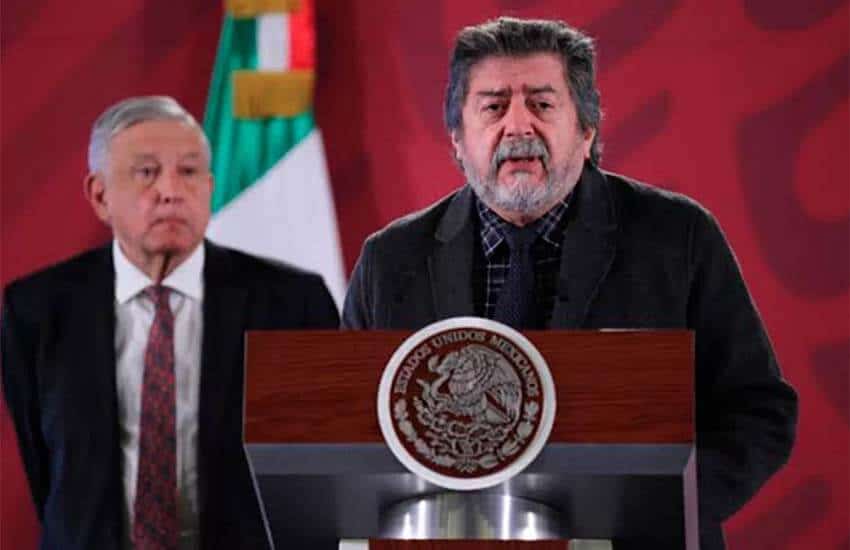By early Wednesday morning, more than 200 people had lined up outside a Mexico City Metro station. Many were double masked, some had bloodshot, tired eyes, others came prepared for a long wait with stools and hot drinks. They all wanted a COVID test, and there were not enough to go around.
“There’s a lot of people that look pretty bad that I think definitely shouldn’t be here . . . it’s pretty worrying,” said César Becerril, a 44-year-old chauffeur who arrived at 5.30 a.m.
From workers off sick to long lines for tests and more patients in hospital, a new wave of COVID-19 in Mexico is showing what happens when the highly contagious omicron variant hits a country with low booster rates and a fragile, underfunded public health system.
Positive tests are at new daily records in the last week, with official numbers — which are believed to dramatically undercount the true figure — reaching 60,000 cases. In the capital, the number of COVID -19 patients in hospital has more than tripled in two weeks.
Several Latin American countries have had devastatingly high death tolls during the pandemic, and Mexico has had the fifth-highest excess deaths per capita in the world, according to a Financial Times analysis.
“The pandemic has punished Mexico hard, more than other countries,” said Alejandro Macías, an infectious disease doctor who helped lead Mexico’s response to the H1N1 influenza outbreak in 2009. “Right now, I think we’re a little overconfident that omicron will be milder.”
The country’s poor performance was because of a multitude of factors from a historically underfunded, unprepared public health system to a lack of clear, scientifically sound messaging from government, experts said.
Mexico has taken an unorthodox approach to the pandemic. It is one of few countries that never closed its borders, it does not require a COVID -19 test for entry and has performed so few tests that it has the highest cumulative positivity rate in the world, according to Our World in Data.
President López Obrador this month caught COVID -19 for the second time. Hours before his test he gave a press conference with symptoms of a cold and said that for most vaccinated people omicron was like a “little COVID.” During his time in isolation, he posted a video of himself maskless in his office with two cabinet members, who sat at a distance.
“It’s a terrible message for everyone,” Francisco Moreno Sánchez, an infectious disease specialist and head of internal medicine at the private ABC Hospital in Mexico City said. “[Health workers] give everything to try to save patients and the message from the government is ‘this is a little cold.’”
However, unlike other world leaders who have played down the disease, Mexico’s government has promoted vaccination as a way out of the pandemic.
Mexico has at least partially vaccinated the population, the level of 63% lagging behind regional peers but slightly above the world average of 60%, according to Our World in Data. It has given out a little under 11 million boosters, equivalent to about 8% of the population.
It has used a wide range of vaccines from Pfizer and Moderna to Russia’s Sputnik and China’s Sinovac.
There have been long lines for tests in the capital in recent weeks, and in the industrial city of Monterrey some even queued overnight to guarantee one. Official advice in Mexico City is now to isolate if you have symptoms and not seek out a test.
Despite the issues, the president’s popularity remains among the highest in the world.
“The authorities aren’t the problem, it’s the people who don’t look after themselves,” 27-year-old Andrés García, who was too far back in the line to get a test Wednesday morning, said. “Now we’re seeing the consequences.”
Among those consequences is an economic contraction in the third quarter. Supply chain bottlenecks and a local labour reform had probably pushed Mexico into a recession, analysts at BBVA said this week, with the latest wave of COVID -19 cases an additional growth risk.
Across the country workers are having to take time off work, said Ricardo Barbosa Ascencio, president of the labor commission at business lobby Coparmex.
On average, Coparmex’s figures showed around 10-13% of companies’ workforces had been off with COVID -19 in this wave, he said. At some factories, up to 20% of the workforce is sick, with autos and electronics particularly hard hit.
“All the big cities in Mexico . . . have the same problem,” he said, adding that restaurants in some beach destinations did not have enough wait staff.
In Mexico, formal workers get their sick pay from social security body IMSS, which also runs a large health system. In the second week of January, IMSS had more than 90,000 people on temporary sick leave, higher than at any other point in the pandemic, Mauricio Hernández, the institution’s head of economic and social benefits wrote on Twitter.
IMSS, the president’s office and the health ministry did not respond to requests for comment. In his morning news conference on Monday, López Obrador said that while other countries had opted for curfews, fines and arrests to contain the pandemic, he had trusted people to be responsible, and that it had “worked well for us.”
The lack of clear guidelines has been a criticism of the government all through the pandemic in Mexico. In recommendations on its coronavirus website, the government says people should keep their houses clean and ventilated but does not mention masks.
In a recent government video posted on social media, a man dressed as a giant coronavirus is beaten by a man dressed as a giant corn with the message that healthy eating is the best way to fend off the virus. Authorities are still often seen spraying disinfectant on people queueing for tests.
Even with clearer, scientifically sound messaging, though, the country’s deeper structural problems will take longer to fix.
“One of the lessons we should have learned from the last pandemic is that our intensive care wasn’t going to be enough and that the health system wasn’t prepared,” Macías said. “None of what’s happening is a surprise . . . we already knew all this.”
© 2022 The Financial Times Ltd. All rights reserved. Please do not copy and paste FT articles and redistribute by email or post to the web.

